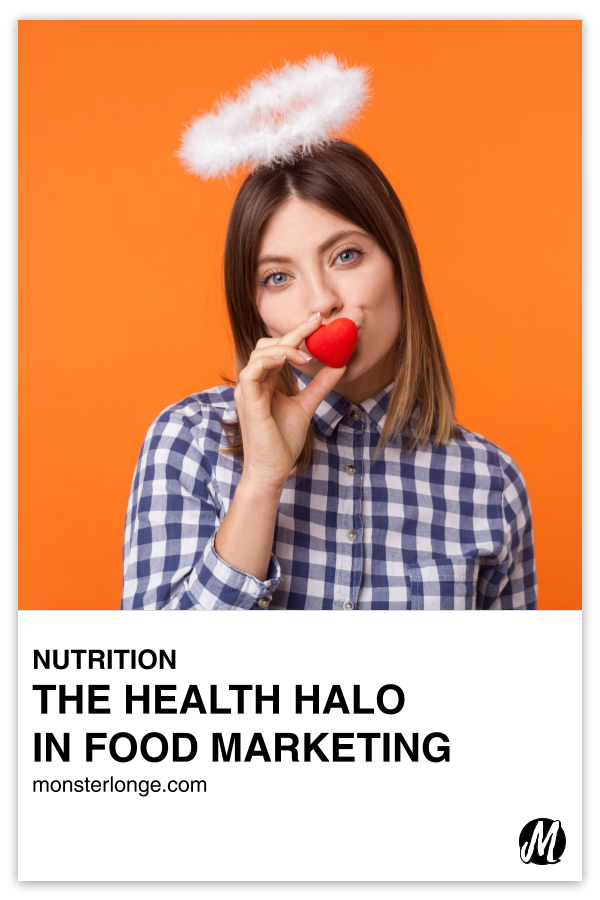
The Health Halo Effect In Food Marketing
What do all of the following words have in common?
• Low-Fat
• Organic
• All-Natural
• No Artificial Ingredients
• Sugar-Free
• Pasture-Raised
• Grass-Fed
• Non-GMO
• Cholesterol Free
• Cage-Free
• Free-Range
• Good Source Of…
• Made With Real…
• Omega-3
• Whole Grain
• Whole Wheat
• Multigrain
• Artisanal
• Local
Yup, you think any box, package, bag, or wrapper of food that has those words on them is healthy!
Here’s the thing, though…
Those big, bold words on the front of food packaging only refer to the agricultural practice or manufacturing process and things of that sort. They have nothing to do with healthfulness or specific nutritional quality.
You thinking those big, bold words mean anything is part of clever marketing to produce what’s known as the “health halo effect”, which is when consumers use one attribute to positively influence their opinion or feeling as a whole.1As an illustration, people see “low fat” and think an item is low in calories, not knowing that things may have been substituted in place of fat to compensate for the loss of taste and texture, which often adds calories and other ingredients that make the “low fat” alternative worse than the regular version.
*gasp* WHY WOULD FOOD COMPANIES DO SUCH A THING?!?! *gasp*
Ummmmmm, dastardly food companies would do such a thing so you feel less guilt in buying the often more expensive product and eating more of it than you probably would the cheaper and supposedly unhealthier version!2For example, organic foods are nutritionally identical to their conventional counterparts. However, a study found that people mistakenly perceived them to be 40 percent lower in calories, as well as lower in fat and higher in fiber. As a result, people felt organic foods were worth paying more for.
So if you find yourself as the constant victim of the food industry’s devilry, then what you can do about it is probably base your buying decision on ALL the comparatively tiny words in the nutrition panel and ingredients list on the back of food packaging rather than relying solely on the handful of big, bold words on the front that are only there to sell you shit!3Yeah, exercise that literacy, motherfucker!!!
The halo effect is a form of cognitive bias, with it being a way for us to expedite the decision-making process so we can quickly categorize foods, in this instance, as good or bad instead of having to spend inordinate amounts of time going through the permutations.
Know what else the halo effect can apply to?
People!
Care for an example?
Of course, you do!
Well, at one time or another I’m sure there’s been a smoking hot guy or gal you didn’t know but ascribed glowing qualities onto based on their appearance alone. You know, stuff like their being smart and a morally upright person, none of which a person’s attractiveness has any bearing on AT ALL!!!
That’s your example of a halo effect outside of food, but what do you say to letting me continue walking you down memory lane?
Good, you’re cool with it!
Okay, so you use the smoking hot looks of that chick or dude you don’t know to presume their mentioned traits and character.
And then what?, you ask.
Ahhhhhhhhhh, and then what happens is you come away thoroughly disappointed by how toxic and stupid they are when you finally interact with them. But despite that, you ignore their having more red flags than a Chinese military parade because they look hot and you’re shallow.
…
Oh wait, that’s only happened to me?!
*shrug*
Glossary: calories, dietary fat
- How To Eat Healthy During Thanksgiving - November 20, 2024
- Weight Loss Tip: no.2620 - November 20, 2024
- Is Going To The Gym Once A Week Enough? - November 19, 2024
